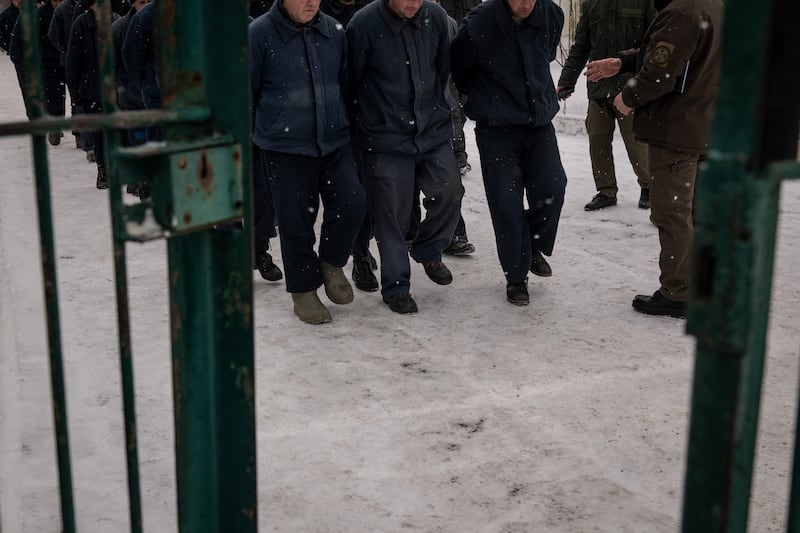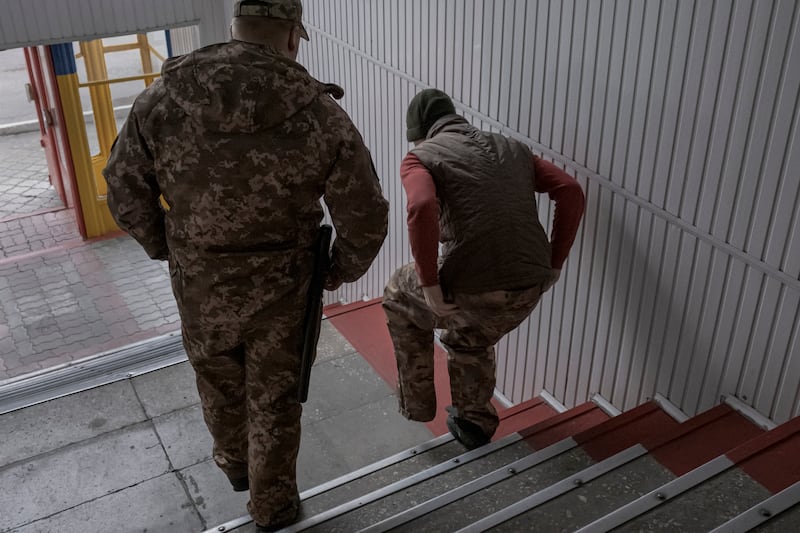In Russian prisons, they said they were deprived of effective treatments for their HIV. On the battlefield in Ukraine, they were offered hope, with the promise of antiviral medications if they agreed to fight.
It was a recruiting pitch that worked for many Russian prisoners.
About 20 per cent of recruits in Russian prisoner units are HIV positive, Ukrainian authorities estimate based on infection rates in captured soldiers. Serving on the front lines seemed less risky than staying in prison, the detainees said in interviews with the New York Times.
“Conditions were very harsh” in Russian prison, said 37-year-old Timur, a HIV-positive Russian soldier interviewed at a detention site in the city of Dnipro in central Ukraine. Timur identified only by a first name, worried that he would face retaliation if he returned to Russia in a prisoner swap.
READ MORE
After he was sentenced to 10 years for drug dealing, the doctors in the Russian prison changed the antiviral medication he had been taking to control HIV to types he feared were not effective, Timur said.
He said he did not think he could survive a decade in Russian prison with HIV. In December, he agreed to serve six months in the Wagner mercenary group in exchange for a pardon and supplies of antiviral medications.
“I understood I would have a quick death or a slow death,” Timur said of choosing between poor HIV treatment in prison and participating in assaults in Russia’s war in Ukraine. “I chose a quick death.”

Timur had no military experience and was provided two weeks of training before deployment to the front, he said. He was issued a Kalashnikov rifle, 120 bullets, an armoured vest and a helmet for the assault. Before sending the soldiers forward, he said, commanders “repeated many times, ‘if you try to leave this field, we will shoot you’.”
Soldiers in his platoon, Timur said, were sent on a risky assault, waves of soldiers with little chance of survival sent into battle on the outskirts of the eastern city of Bakhmut. Most were killed on their first day of combat. Timur was captured.
Units of former prisoners have made up the bulk of forces in Russia’s attack on Bakhmut, one of the bloodiest and longest-running battles in the war. Beginning on a wide scale last summer, inmates were promised pardons for going into combat.
Those with HIV or hepatitis C were forced to identify their status in a very public manner.
[ Paul Gillespie: False notion of the West traces a line from Plato to NatoOpens in new window ]
When captured by Ukrainian soldiers, many wore red or white rubber wristbands, or both, signifying they had either disease, both widespread in the Russian prison system. They were made to wear the wristbands ostensibly as a warning to other soldiers in case they were wounded, although they would not necessarily be infectious if properly medicated.
Antiviral medication can indefinitely treat HIV and suppress the virus to the point where an individual is not infectious. Ukraine allows those who are HIV positive to serve in combat roles with approval from their commanders.
“If a person is in treatment, and continues treatment, the virus can be undetectable and he can serve, he can work and is not dangerous to those around him,” said Dr Iryna Dizha, a medical adviser to 100 Percent Life, a HIV advocacy group in Ukraine.
The wristbands pose a risk to those wearing them. They are intended to protect other soldiers from infection if the wearer suffers a bloody battlefield wound, the prisoners of war said. Reluctance of fellow soldiers or medics to be exposed to the blood, however, could delay first aid.

Another HIV-positive prisoner of war who fought in the Wagner group, Yevgeny, said that he had suffered a gunshot wound a month before his capture by Ukrainian forces, according to a videotaped interrogation by Ukraine’s domestic intelligence agency. He received timely medical help despite wearing a red bracelet, he said, but was treated in a hospital where he felt doctors were careless about infecting other patients.
“There were no conditions for the HIV infected,” he said. “We were all treated together, the healthy and the unhealthy.”
[ Ukraine war: Kyiv says it retains control of key supply road into BakhmutOpens in new window ]
And in the chaos of battle the bracelets serve little purpose, said 31-year-old Vadim, who was convicted of robbery and served in Wagner before being captured in a bunker.
After Ukrainian soldiers tossed several hand grenades into the bunker, the Russian soldiers, including two who were HIV positive, hunkered in a corner. Three of 10 soldiers in the bunker were killed and most others wounded, Vadim said. He emerged splattered with blood. “I was always afraid of this disease,” he said in an interview at a Ukrainian detention site. After the exposure, he tested negative.

Since the summer, about 50,000 prisoners have signed up to fight in Ukraine, roughly 10 per cent of the incarcerated population, according to Russia Behind Bars, a non-governmental group monitoring Russian prisons.
Ukraine’s military intelligence agency said in a statement last autumn that some captured soldiers had HIV and hepatitis C. The domestic intelligence agency has made available videos of interrogations with Wagner prisoners of war describing HIV infection and showing red bracelets. The Ukrainian authorities provide antiviral medicine to HIV-positive prisoners of war.
[ Bryansk region deaths and Crimea fuel depot fire the work of Kyiv, Russia saysOpens in new window ]
HIV, hepatitis C and tuberculosis, including drug-resistant strains, are prevalent in Russian prisons and penal colonies. About 10 per cent of Russia’s incarcerated population is HIV-positive, said Olga Romanova, the director of Russia Behind Bars. About one-third of the total inmate population has at least one of those three infections, she said.
In interviews, HIV-positive prisoners of war said they were asked only to do push-ups before a recruiter to prove their fitness to serve. – This article originally appeared in the New York Times














